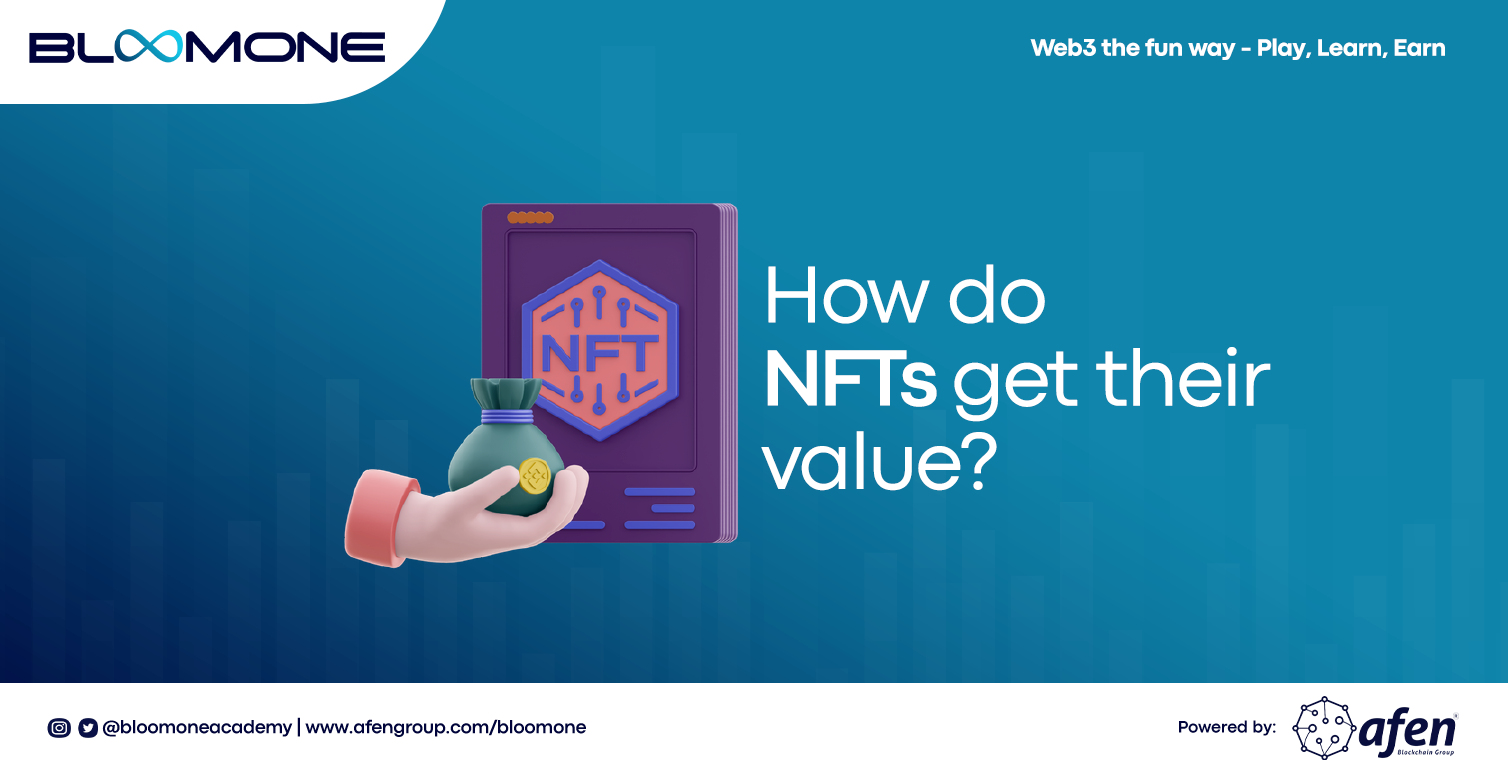
How do NFTs get their value? - #3
NFTs went viral in 2021 given how they were in high demand and highly. For most people, it didn’t make sense. How could digital arts sell for as high as $69 million (as in the case of Beeple)? What gives NFTs their values?
Well, first of all, you must understand what NFTs are and why they are considered digital assets or digital representations of assets.
Depending on the asset that an NFT represents, value is usually derived from the combination of:
-
The utility of the NFT
-
Ownership History of the asset or NFT
-
How much value the NFT can gain in the future, and
-
Liquidity Premium of the NFT
Let’s look at these in detail.
Utility
How an NFT can be used in digital spaces like the metaverse, affects its value.
Two major NFT categories that have high utility value are game assets and tickets. For example, an NFT ticket may be used to attend a rare event in the metaverse and equally serve as collectible and in-game NFT assets such as digital clothes that can be worn by avatars in-game.
Another dimension of utility is the ability to use the NFT in a different application, usually in-game. Imagine if you purchased a battleship in one game and can use it in multiple games, the value would definitely be even higher.
Although for now, 90% of NFT game players can only use digital assets in one game. Until the metaverse - an ecosystem of virtual worlds and attractive use cases of NFTs - is fully ready, interoperability remains a challenge.
Another way to increase utility value that is easier to achieve is to form partnerships with other businesses to provide benefits to people who hold your NFT.
For example, holding certain NFTs serve as a passway to exclusive club memberships and discounts on prices of certain in-house goods or services. This is possible because the creators of such NFTs have partnered with the event organizers to create such memberships.
Ownership History
The identity of the issuer and previous owners of NFTs influences their value. NFTs with high ownership histories are often created or issued by famous artists, celebrities, or companies with strong brands.
There are two ways to increase value. The first is to co-operate with companies or individuals with a strong brand to issue NFT tokens. That naturally brings traffic and users to the ecosystem. For example, the first authorized NFT that represents a Formula 1 car was sold for $113,124.
The second way is to resell NFTs that were previously owned by people who are influential. Currently, it’s challenging to find out who are the previous owners. Marketplaces and sellers can provide an easy-to-use tracking interface to increase the value of NFTs. For example, OpenSea can highlight the addresses of investors who make the most money from trading NFTs and list other NFTs they own.
Future Value
If an NFT has the potential to reach a higher valuation or generate cash flow in the future, its present value drastically increases. Valuation is driven by speculation and can sometimes be the main driver behind price appreciation.
As with certain stock or cryptocurrency prices, speculation is purely driven by human nature. For example, the price of CryptoKitty #18 jumped from 9ETH to 253ETH in just three days in December 2017 because people assumed it would increase in value.
Speculation can be guided by including price performance charts of NFT items or by highlighting NFTs that appreciate in value. The sneaker marketplace, StockX, achieves its $1 billion valuation partly because it creates a rare sneaker market by encouraging people to speculate on the price of sneakers.
Future cash flow is the interest or royalties earned by the original owner of the NFT. For example, SuperRare allows creators of NFT artworks to receive a 3% royalty every time their artworks are sold subsequently on the secondary market. In the future, companies can borrow concepts from DeFi innovations.
NFTs are assets and can be leased and collateralized to create additional cash flow. In a game, there is a demand from players who want a specific game asset for one day to complete a mission.
Liquidity Premium
High liquidity translates to a higher value of NFT. The liquidity premium is the primary reason why tokens that are created on-chain should have a higher value than off-chain assets.
ERC standard NFTs can be traded easily without friction on secondary markets with anyone who holds ETH, which increases the number of potential buyers. Investors prefer to invest in NFT categories that have a high trading volume because liquidity lowers the risk of holding the NFTs.
In an extreme scenario where the NFT loses its utility value after the associated platform is closed, a highly liquid NFT still has value as long as there are people willing to buy and sell. On the other hand, NFT standards that are not based on Ethereum suffer from a lack of liquidity, and the value of NFT created on those platforms is often discounted.
Companies need to design token economics that encourages users to trade to increase engagement and NFT liquidity. For example, games can force players to swap assets to remain competitive in the game and can depreciate NFT assets if they are idle for too long.
Conclusion
In recent times, the value of NFTs stagnated or declined compared to the numbers in 2021. This is simply the market adjusting to correct the surge in value caused by the hype around these assets.
It doesn’t mean NFTs would continue to decline in value or faze away. The opposite is true as NFT prices would instead stabilize in the coming years. This is because of the technological importance of NFTs in several industries from gaming to legal.
If you enjoyed this content, why not share it with your network? To follow AFEN’s product updates, Sign up to NftyTribe’s newsletter for updates on our newest NFT marketplace or join Metacitti’s waitlist.
